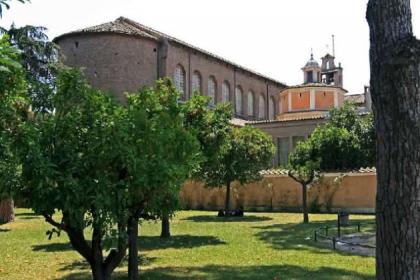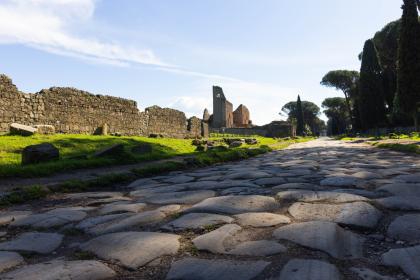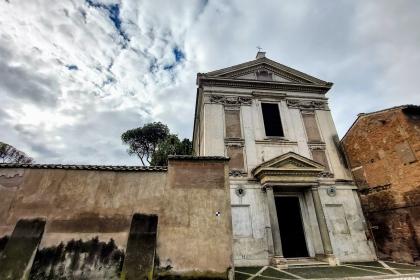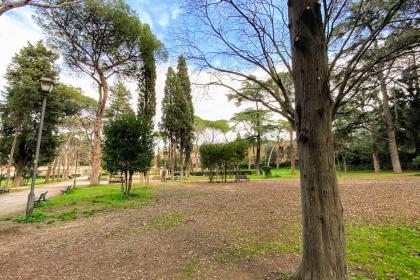
San Sisto Vecchio is a church of ancient origins almost “hidden” in an area full of historical and archaeological memories: its dedication to Pope Sixtus II, who was martyred in 258 near the catacombs of San Callisto, appears in a 6th century document but it is fairly certain that the basilica was erected in the 4th or early 5th century.
San Sisto Vecchio and St Dominic
Shortly after being renovated during the pontificate of Innocent III, the church was given to St Dominic de Guzmán, who established his first Roman convent here. However, the Dominicans only remained there for two years because they moved to the church of Santa Sabina on the Aventine in 1220. In order not to leave the monastery deserted, St Dominic decided to use it as the seat of his new cloistered monastic order of Dominican nuns, formed mostly by the nuns coming from the nearby monastery of Santa Maria in Tempulo, who brought with them their considerable financial resources and their miraculous icon of Our Lady (now in the church of Santa Maria del Rosario on Monte Mario).
Sisto Vecchio and Sisto Nuovo: the old and the new church of the nuns
The church and monastery were restored again under Sixtus IV, at the end of the 15th century. The whole area, however, was infested with malaria and at the end of the 16th century the nuns were allowed to move to a new church in the Rione Monti: from this time on, San Sisto was named Vecchio to distinguish it from the church of Santi Domenico e Sisto, or Sisto Nuovo. In the 18th century, the complex, by then fallen into ruin, was refitted by Pope Benedict XIII and the work was overseen by Filippo Raguzzini (the Rococo architect better known for the scenic piazza outside the large church of Sant’Ignazio), who built the present façade and a new cloister. Since the end of the 19th century, the complex has been run by the Congregation of Dominican Sisters founded by Mother Maria Antonia Lalia and is home to a prestigious public school.
The artistic treasures of San Sisto Vecchio
The interior, formerly with three naves, has now a single nave and is decorated with stucco works. It was completely restored by Raguzzini, but still retains the remains of a late 13th-century fresco cycle between the 13th-century apse and the narrower 15th-century apse. Worth seeing are the 12th-century bell tower, one of the most elegant in the city, and the cloister. The walls of the cloister galleries are decorated with Stories from the Life of St Dominic, painted by Andrea Casale in the 18th century; under the arcades, there are some decorative parts of the ancient early Christian church. The area where the garden of the Dominican nuns once stood is now occupied by the plant nursery of San Sisto.
3 places not to be missed nearby
Photo Turismo Roma
Saints and demons in the church of Santa Sabina

The Appian Way

 Condividi
Condividi
Church of San Cesareo de Appia

 Condividi
Condividi
Parco degli Scipioni

 Condividi
Condividi
Information
The basilica is open every day from 9.00 until 12.00 and in the afternoon from 16.00 until 18.00.The opening times are subject to variations, so it is recommended to contact always the basilica
 Condividi
Condividi
Location
To find out about all accessibility services, visit the Rome accessible section.











































